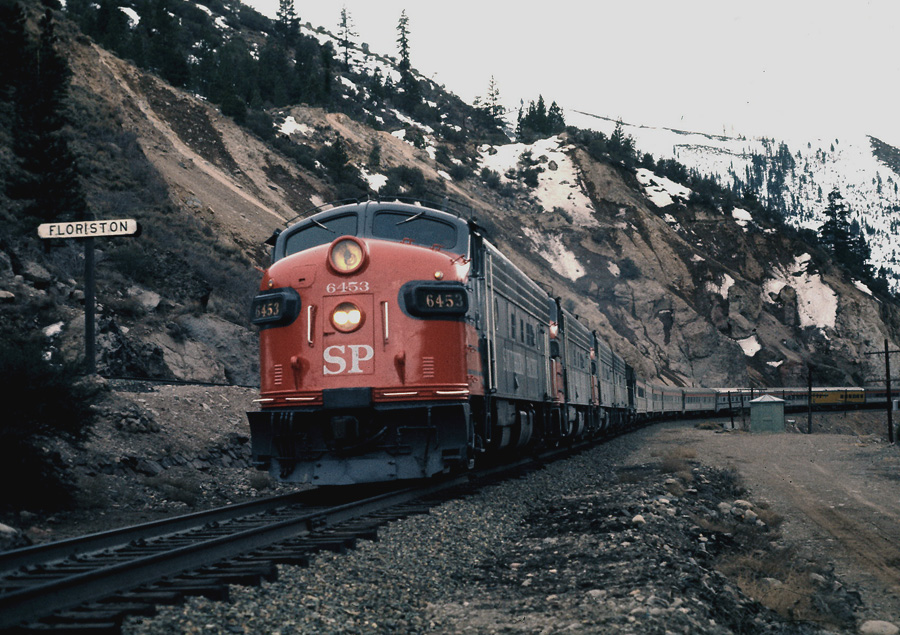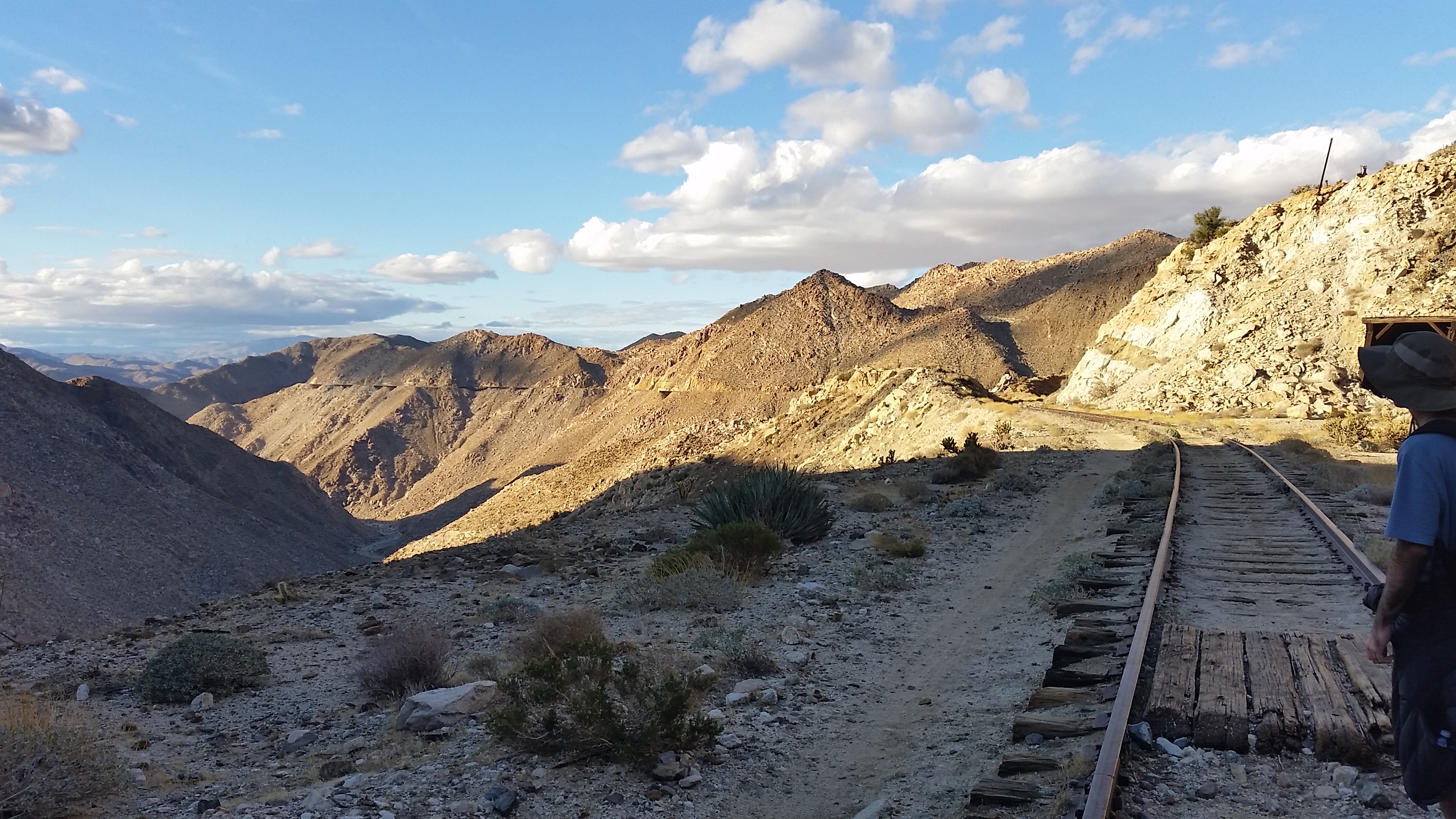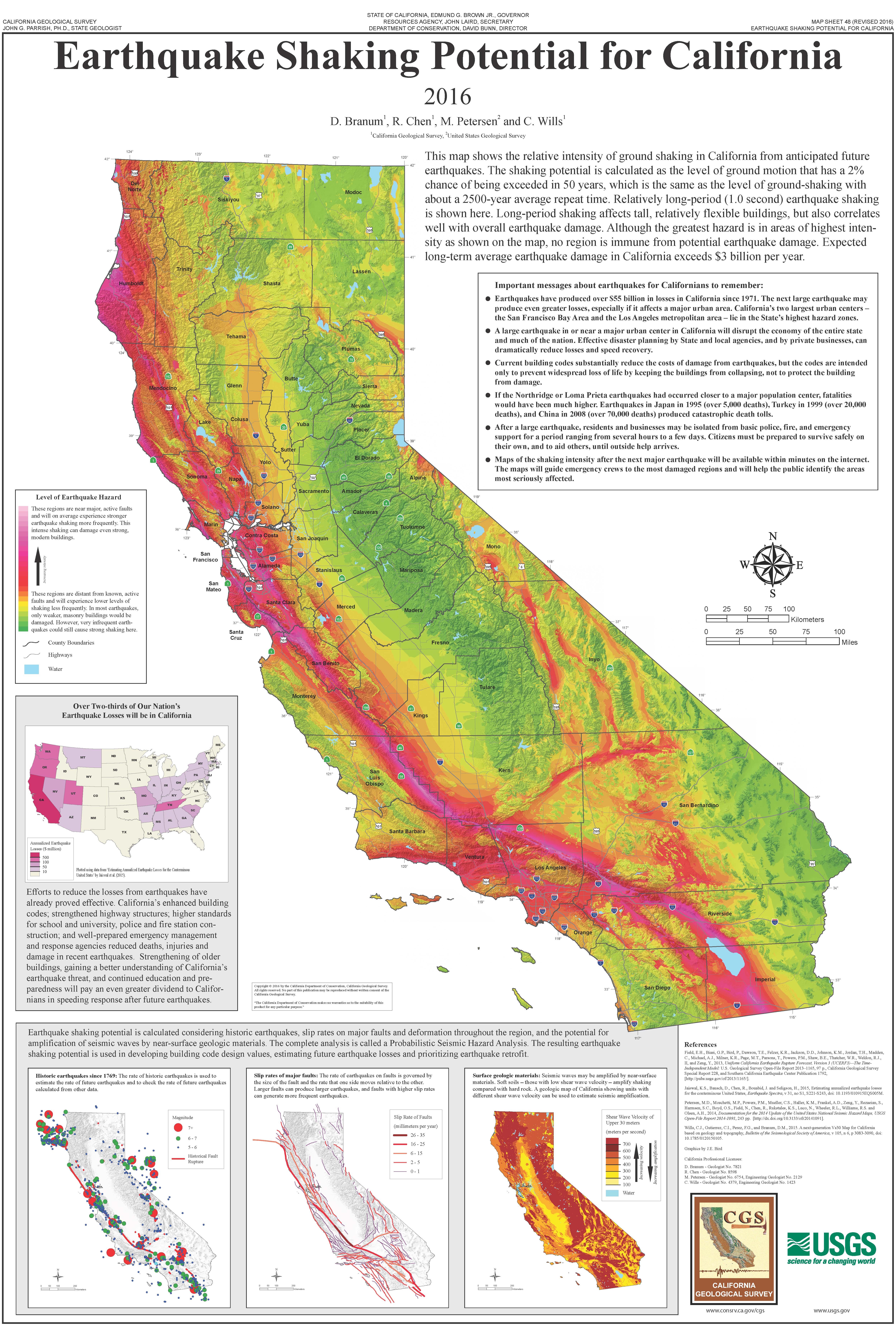|
Goat Canyon Trestle
Goat Canyon Trestle is a wooden trestle in San Diego County, California. At a length of , it is the world's largest all-wood trestle. Goat Canyon Trestle was built in 1933 as part of the San Diego and Arizona Eastern Railway, after one of the many tunnels through the Carrizo Gorge collapsed. The railway had been called the "impossible railroad" upon its 1919 completion. It ran through Baja California and eastern San Diego County before ending in Imperial Valley. The trestle was made of wood, rather than metal, due to temperature fluctuations in the Carrizo Gorge. By 2008, most rail traffic stopped using the trestle. Background Under the direction of John D. Spreckels, construction of the San Diego and Arizona Eastern Railroad began in 1907. It was backed by Edward Henry Harriman at the urging of President Theodore Roosevelt. Engineers called the route "impossible" as it crossed the Colorado Desert and through the Jacumba Mountains. In 1919, the railroad was completed, connecti ... [...More Info...] [...Related Items...] OR: [Wikipedia] [Google] [Baidu] |
Goat Canyon (Carrizo Gorge)
Goat Canyon is a valley in San Diego County, California, United States, located within the Carrizo Gorge in the Jacumba Mountains. The rock forming the canyon is crystalline basement. One feature of the canyon is a dry waterfall. The canyon is bridged by a wooden railroad trestle, the Goat Canyon Trestle, which is the world's largest curved all-wood trestle. The canyon is accessible by trail by traveling west from Mortero Palms. Flora and fauna Goat Canyon is named after desert bighorn sheep that live within and around the canyon. During a desert bloom, which occurred in 2017, monkey flowers were observed flowering in the canyon. The endangered species least Bell's vireo migrates through the area around the canyon. Human history Prior to Spanish governance, there was Native American activity in the area around Goat Canyon; the impact of this activity includes petroglyphs and pictograms in Carrizo Gorge. The last Native Americans to live in the area were the Kumeyaay. Later c ... [...More Info...] [...Related Items...] OR: [Wikipedia] [Google] [Baidu] |
Southern Pacific Railway
The Southern Pacific (or Espee from the railroad initials- SP) was an American Class I railroad network that existed from 1865 to 1996 and operated largely in the Western United States. The system was operated by various companies under the names Southern Pacific Railroad, Southern Pacific Company and Southern Pacific Transportation Company. The original Southern Pacific began in 1865 as a land holding company. The last incarnation of the Southern Pacific, the Southern Pacific Transportation Company, was founded in 1969 and assumed control of the Southern Pacific system. The Southern Pacific Transportation Company was acquired in 1996 by the Union Pacific Corporation and merged with their Union Pacific Railroad. The Southern Pacific legacy founded hospitals in San Francisco, Tucson, and Houston. In the 1970s, it also founded a telecommunications network with a state-of-the-art microwave and fiber optic backbone. This telecommunications network became part of Sprint, a compa ... [...More Info...] [...Related Items...] OR: [Wikipedia] [Google] [Baidu] |
Hurricane Kathleen (1976)
Hurricane Kathleen was a tropical cyclone that had a destructive impact in California. On September 7, 1976, a tropical depression formed; two days later it accelerated north towards the Baja California Peninsula. Kathleen brushed the Pacific coast of the peninsula as a hurricane on September 9 and made landfall as a fast-moving tropical storm the next day. With its circulation intact and still a tropical storm, Kathleen headed north into the United States and affected California and Arizona. Kathleen finally dissipated late on September 11. Damage in the United States was considerable. California received record rainfall, with over a foot of rain falling in some areas. Flooding caused catastrophic destruction to Ocotillo, and six people drowned. Flooding extended west; railway tracks were destroyed in Palm Desert and high winds and severe flooding were recorded in Arizona. Overall, the damage total was $160 million (1976 USD) and 12 deaths were attributed to the storm. Backgro ... [...More Info...] [...Related Items...] OR: [Wikipedia] [Google] [Baidu] |
1950s American Automobile Culture
1950s American automobile culture has had an enduring influence on the culture of the United States, as reflected in popular music, major trends from the 1950s and mainstream acceptance of the "hot rod" culture. The American manufacturing economy switched from producing war-related items to consumer goods at the end of World War II, and by the end of the 1950s, one in six working Americans were employed either directly or indirectly in the automotive industry. The United States became the world's largest manufacturer of automobiles, and Henry Ford's goal of 30 years earlier—that any man with a good job should be able to afford an automobile—was achieved. A new generation of service businesses focusing on customers with their automobiles came into being during the decade, including drive-through or drive-in restaurants and greatly increasing numbers of drive-in theaters (cinemas). The decade began with 25 million registered automobiles on the road, most of which predated Wo ... [...More Info...] [...Related Items...] OR: [Wikipedia] [Google] [Baidu] |
World War II
World War II or the Second World War, often abbreviated as WWII or WW2, was a world war that lasted from 1939 to 1945. It involved the World War II by country, vast majority of the world's countries—including all of the great powers—forming two opposing military alliances: the Allies of World War II, Allies and the Axis powers. World War II was a total war that directly involved more than 100 million Military personnel, personnel from more than 30 countries. The major participants in the war threw their entire economic, industrial, and scientific capabilities behind the war effort, blurring the distinction between civilian and military resources. Air warfare of World War II, Aircraft played a major role in the conflict, enabling the strategic bombing of population centres and deploying the Atomic bombings of Hiroshima and Nagasaki, only two nuclear weapons ever used in war. World War II was by far the List of wars by death toll, deadliest conflict in hu ... [...More Info...] [...Related Items...] OR: [Wikipedia] [Google] [Baidu] |
Goat Canyon Trestle 2 Of 8
The goat or domestic goat (''Capra hircus'') is a domesticated species of goat-antelope typically kept as livestock. It was domesticated from the wild goat (''C. aegagrus'') of Southwest Asia and Eastern Europe. The goat is a member of the animal family Bovidae and the tribe Caprini, meaning it is closely related to the sheep. There are over 300 distinct breeds of goat.Hirst, K. Kris"The History of the Domestication of Goats".'' About.com''. Accessed August 18, 2008. It is one of the oldest domesticated species of animal, according to archaeological evidence that its earliest domestication occurred in Iran at 10,000 calibrated calendar years ago. Goats have been used for milk, meat, fur, and skins across much of the world. Milk from goats is often turned into goat cheese. Female goats are referred to as ''does'' or ''nannies'', intact males are called ''bucks'' or ''billies'', and juvenile goats of both sexes are called ''kids''. Castrated males are called ''wethers''. ... [...More Info...] [...Related Items...] OR: [Wikipedia] [Google] [Baidu] |
Nail (fastener)
In woodworking and construction, a nail is a small object made of metal (or wood, called a tree nail or "trunnel") which is used as a fastener, as a peg to hang something, or sometimes as a decoration. Generally, nails have a sharp point on one end and a flattened head on the other, but headless nails are available. Nails are made in a great variety of forms for specialized purposes. The most common is a ''wire nail''. Other types of nails include ''pins'', ''tacks'', ''brads'', ''spikes'', and '' cleats.'' Nails are typically driven into the workpiece by a hammer or nail gun. A nail holds materials together by friction in the axial direction and shear strength laterally. The point of the nail is also sometimes bent over or ''clinched'' after driving to prevent pulling out. History The history of the nail is divided roughly into three distinct periods: * Hand-wrought (forged) nail (pre-history until 19th century) * Cut nail (roughly 1800 to 1914) * Wire nail (roughly 1860 to ... [...More Info...] [...Related Items...] OR: [Wikipedia] [Google] [Baidu] |
Carrizo Gorge
Carrizo Gorge is a valley in the Jacumba Mountains, in San Diego County, California San Diego County (), officially the County of San Diego, is a county in the southwestern corner of the U.S. state of California. As of the 2020 census, the population was 3,298,634, making it California's second-most populous county and the f .... Its mouth is at an elevation of , where it widens out to become Carrizo Canyon, northeast of Palm Grove. Its head is located in the Jacumba Mountains, north of Round Mountain, at an elevation of at . References External linksCarrizo Gorge Wilderness- BLM Valleys of San Diego County, California {{SanDiegoCountyCA-geo-stub ... [...More Info...] [...Related Items...] OR: [Wikipedia] [Google] [Baidu] |
Pacific Southwest Railway Museum
The Pacific Southwest Railway Museum is a railroad museum located in Campo, California, on the San Diego & Arizona Eastern Railway line. The museum also owns and manages a railroad depot located in La Mesa, California. Facilities Campo Since 1986, the Pacific Southwest Railway Museum operates all-volunteer train excursions from the restored 1916 Depot in Campo, in the Mountain Empire area of southeastern San Diego County, California. These trains are powered by vintage diesel-electric locomotives. The facility sits on a property. The museum also has approximately 90 historic railroad cars and locomotives on display, including five steam locomotives, eighteen diesel locomotives and many other pieces of rolling stock. A large display building houses part of the railroad equipment collection which allows visitors to view or walk through the equipment. This includes an exhibit titled "Signal Science" which uses retired railroad signals to demonstrate how railway signals work ... [...More Info...] [...Related Items...] OR: [Wikipedia] [Google] [Baidu] |
Engineering Drawings
An engineering drawing is a type of technical drawing that is used to convey information about an object. A common use is to specify the geometry necessary for the construction of a component and is called a detail drawing. Usually, a number of drawings are necessary to completely specify even a simple component. The drawings are linked together by a master drawing or assembly drawing which gives the ''drawing numbers'' of the subsequent detailed components, quantities required, construction materials and possibly 3D images that can be used to locate individual items. Although mostly consisting of pictographic representations, abbreviations and symbols are used for brevity and additional textual explanations may also be provided to convey the necessary information. The process of producing engineering drawings is often referred to as technical drawing or drafting (draughting). Drawings typically contain multiple views of a component, although additional ''scratch views'' ma ... [...More Info...] [...Related Items...] OR: [Wikipedia] [Google] [Baidu] |
List Of Earthquakes In California
The earliest known California earthquake was documented in 1769 by the Spanish explorers and Catholic missionaries of the Portolá expedition as they traveled northward from San Diego along the Santa Ana River near the present site of Los Angeles. Ship captains and other explorers also documented earthquakes. As Spanish missions were constructed beginning in the late 18th century, earthquakes records were kept. After the missions were secularized in 1834, records were sparse until the California Gold Rush in the 1840s. From 1850–2004, there was about one potentially damaging event per year on average, though many of these did not cause serious consequences or loss of life. Since the three damaging earthquakes that occurred in the American Midwest and the East Coast ( 1755 Cape Ann, 1811–12 New Madrid, 1886 Charleston) were well known, it became apparent to settlers that the earthquake hazard was different in California. While the 1812 San Juan Capistrano, 1857 Fort Tejon, ... [...More Info...] [...Related Items...] OR: [Wikipedia] [Google] [Baidu] |
San Diego And Arizona Railway
The San Diego and Arizona Railway was a Short-line railroad, short line United States, U.S. railroad founded by entrepreneur John D. Spreckels, and dubbed "The Impossible Railroad" by engineers of its day due to the immense logistical challenges involved. It linked San Diego, its western terminus, with El Centro, California, El Centro, its eastern terminus, where passengers could connect with Southern Pacific Railroad, Southern Pacific's transcontinental lines, eliminating the need to first travel north via Los Angeles or Riverside, California, Riverside. The company charter was executed on December 14, 1906, and the groundbreaking ceremony was held the following September. Numerous delays (including government intervention during World War I) delayed the completion of the line to November 15, 1919. Damage to the lines from both natural disasters and sabotage exerted great financial pressure on the company, and in 1932 Spreckels' heirs sold their interests in the railroad to th ... [...More Info...] [...Related Items...] OR: [Wikipedia] [Google] [Baidu] |











